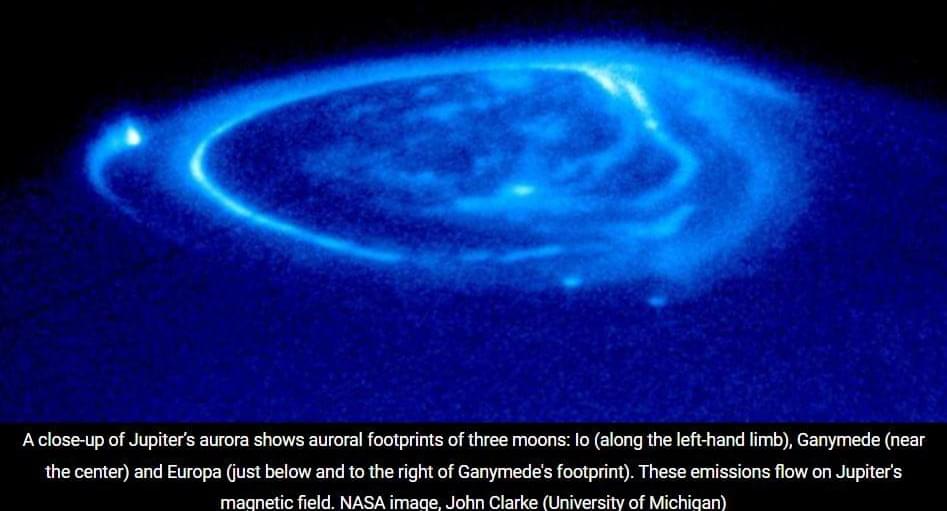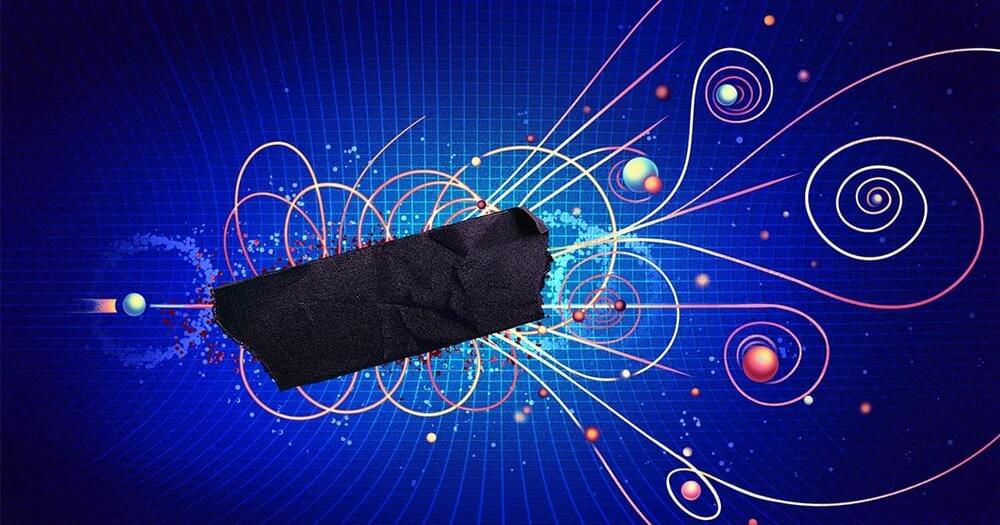Noncommutative probability and categorical structure Quantum-like revolut…
Category: mathematics – Page 58
A Huge Cosmology Problem Might Just Have Disappeared
Take courses in science, computer science, and mathematics on Brilliant! First 30 days are free and 20% off the annual premium subscription when you use our link ➜ https://brilliant.org/sabine.
The rate at which the universe is currently expanding is known as the Hubble Rate. In recent years, different measurements have given different results for the Hubble rate, a discrepancy between theory and observation that’s been called the “Hubble tension”. Now, a team of astrophysicists claims the Hubble tension is gone and it’s the fault of supernovae data. Let’s have a look.
Paper: https://iopscience.iop.org/article/10…
🤓 Check out my new quiz app ➜ http://quizwithit.com/
💌 Support me on Donorbox ➜ https://donorbox.org/swtg.
📝 Transcripts and written news on Substack ➜ https://sciencewtg.substack.com/
👉 Transcript with links to references on Patreon ➜ / sabine.
📩 Free weekly science newsletter ➜ https://sabinehossenfelder.com/newsle…
👂 Audio only podcast ➜ https://open.spotify.com/show/0MkNfXl…
🔗 Join this channel to get access to perks ➜
/ @sabinehossenfelder.
🖼️ On instagram ➜ / sciencewtg.
#science #sciencenews #cosmology

New Discoveries about Jupiter’s Magnetosphere
New discoveries about Jupiter could lead to a better understanding of Earth’s own space environment and influence a long-running scientific debate about the solar system’s largest planet. “By exploring a larger space such as Jupiter, we can better understand the fundamental physics governing Earth’s magnetosphere and thereby improve our space weather forecasting,” said Peter Delamere, a professor at the UAF Geophysical Institute and the UAF College of Natural Science and Mathematics.
“We are one big space weather event from losing communication satellites, our power grid assets, or both,” he said.
Space weather refers to disturbances in the Earth’s magnetosphere caused by interactions between the solar wind and the Earth’s magnetic field. These are generally associated with solar storms and the sun’s coronal mass ejections, which can lead to magnetic fluctuations and disruptions in power grids, pipelines and communication systems.

The S-Matrix Is the Oracle Physicists Turn To in Times of Crisis
The Standard Model Lagrangian specifies all known particles that might come into being during a collision and how they might interact.
Particle physicists in search of the next theory of reality are consulting a mathematical structure that they know will never fail: a table of possibilities known as the S-matrix.

Euryphysics: a (somewhat) new conceptual model of mind, reality and psi
Awodey, Steve, Álvaro Pelayo, Michael A. Warren (2013). Voevodsky’s Univalence Axiom in homotopy type theory. Notices of the American Mathematical Society.
Bakhtin, Mikhail (1984). Bakhtin’s analysis of Dostoevsky. Problems of Dostoevsky’s Poetics. U. Minn. Press.
Carpenter, James (2012). First Sight: ESP and Parapsychology in Everyday Life. Rowan & Littlefield.

Scientist Proposes a New Universal Law of Biology That May Explain Aging
Life appears to require at least some instability. This fact should be considered a biological universality, proposes University of Southern California molecular biologist John Tower.
Biological laws are thought to be rare and describe patterns or organizing principles that appear to be generally ubiquitous. While they can be squishier than the absolutes of math or physics, such rules in biology nevertheless help us better understand the complex processes that govern life.
Most examples we’ve found so far seem to concern themselves with the conservation of materials or energy, and therefore life’s tendency towards stability.

No, Today’s AI Isn’t Sentient. Here’s How We Know
All sensations—hunger, feeling pain, seeing red, falling in love—are the result of physiological states that an LLM simply doesn’t have. Consequently we know that an LLM cannot have subjective experiences of those states. In other words, it cannot be sentient.
An LLM is a mathematical model coded on silicon chips. It is not an embodied being like humans. It does not have a “life” that needs to eat, drink, reproduce, experience emotion, get sick, and eventually die.
It is important to understand the profound difference between how humans generate sequences of words and how an LLM generates those same sequences. When I say “I am hungry,” I am reporting on my sensed physiological states. When an LLM generates the sequence “I am hungry,” it is simply generating the most probable completion of the sequence of words in its current prompt. It is doing exactly the same thing as when, with a different prompt, it generates “I am not hungry,” or with yet another prompt, “The moon is made of green cheese.” None of these are reports of its (nonexistent) physiological states. They are simply probabilistic completions.
Project Astra demo | Solving math problems
Watch Project Astra factorise a maths problem and even correct a graph. All shot on a prototype glasses device, in a single take in real time.
Project Astra is a prototype that explores the future of AI assistants. Building on our Gemini models, we’ve developed AI agents that can quickly process multimodal information, reason about the context you’re in, and respond to questions at a conversational pace, making interactions feel much more natural.
More about Project Astra: deepmind.google/project-astra

Karmela Padavic-Callaghan
Karmela Padavic-Callaghan is a science writer reporting on physics, materials science and quantum technology. Karmela earned a PhD in theoretical condensed matter physics and atomic, molecular and optical physics from the University of Illinois Urbana-Champaign. Their research has been published in peer-reviewed journals, including Physical Review Letters and New Journal of Physics.
They studied ultracold atomic systems in novel geometries in microgravity and the interplay of disorder and quasiperiodicity in one-dimensional systems, including metamaterials. During their doctoral training, they also participated in several art-based projects, including co-developing a course on physics and art and serving as a production manager for a devised theatre piece titled Quantum Voyages.
Before joining New Scientist, Karmela was an assistant professor at Bard High School Early College in New York City, where they taught high school and college courses in physics and mathematics. Karmela’s freelance writing has been featured in Wired, Scientific American, Slate, MIT Technology Review, Quanta Magazine and Physics World.

A New Dimension of Quantum Materials: Topological Phonons Discovered in Crystal Lattices
An international research team has shown that phonons, the quantum particles behind material vibrations, can be classified using topology, much like electronic bands in materials. This breakthrough could lead to the development of new materials with unique thermal, electrical, and mechanical properties, enhancing our understanding and manipulation of solid-state physics.
An international group of researchers has found that quantum particles, which play a key role in the vibrations of materials affecting their stability and other characteristics, can be classified through topology. Known as phonons, these particles represent the collective vibrational patterns of atoms within a crystal structure. They create disturbances that spread like waves to nearby atoms. Phonons are crucial for several properties of solids, such as thermal and electrical conductivity, neutron scattering, and quantum states including charge density waves and superconductivity.
The spectrum of phonons—essentially the energy as a function of momentum—and their wave functions, which represent their probability distribution in real space, can be computed using ab initio first principle codes. However, these calculations have so far lacked a unifying principle. For the quantum behavior of electrons, topology—a branch of mathematics—has successfully classified the electronic bands in materials. This classification shows that materials, which might seem different, are actually very similar.